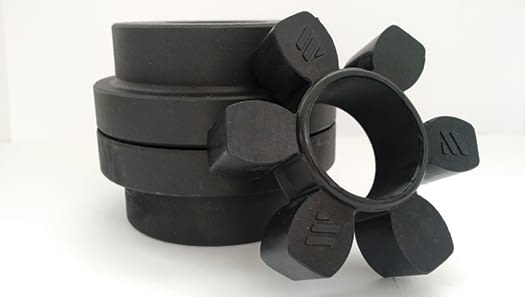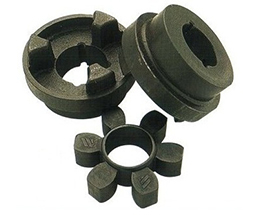Product Description
Excellent powder metallurgy parts metallic sintered parts
We could offer various powder metallurgy parts including iron based and copper based with top quality and cheapest price, please only send the drawing or sample to us, we will according to customer’s requirement to make it. if you are interested in our product, please do not hesitate to contact us, we would like to offer the top quality and best service for you. thank you!
How do We Work with Our Clients
1. For a design expert or a big company with your own engineering team: we prefer to receive a fully RFQ pack from you including drawing, 3D model, quantity, pictures;
2. For a start-up company owner or green hand for engineering: just send an idea that you want to try, you don’t even need to know what casting is;
3. Our sales will reply you within 24 hours to confirm further details and give the estimated quote time;
4. Our engineering team will evaluate your inquiry and provide our offer within next 1~3 working days.
5. We can arrange a technical communication meeting with you and our engineers together anytime if required.
| Place of origin: | Jangsu,China |
| Type: | Powder metallurgy sintering |
| Spare parts type: | Powder metallurgy parts |
| Machinery Test report: | Provided |
| Material: | Iron,stainless,steel,copper |
| Key selling points: | Quality assurance |
| Mould type: | Tungsten steel |
| Material standard: | MPIF 35,DIN 3571,JIS Z 2550 |
| Application: | Small home appliances,Lockset,Electric tool, automobile, |
| Brand Name: | OEM SERVICE |
| Plating: | Customized |
| After-sales Service: | Online support |
| Processing: | Powder Metallurgr,CNC Machining |
| Powder Metallurgr: | High frequency quenching, oil immersion |
| Quality Control: | 100% inspection |
The Advantage of Powder Metallurgy Process
1. Cost effective
The final products can be compacted with powder metallurgy method ,and no need or can shorten the processing of machine .It can save material greatly and reduce the production cost .
2. Complex shapes
Powder metallurgy allows to obtain complex shapes directly from the compacting tooling ,without any machining operation ,like teeth ,splines ,profiles ,frontal geometries etc.
3. High precision
Achievable tolerances in the perpendicular direction of compacting are typically IT 8-9 as sintered,improvable up to IT 5-7 after sizing .Additional machining operations can improve the precision .
4. Self-lubrication
The interconnected porosity of the material can be filled with oils ,obtaining then a self-lubricating bearing :the oil provides constant lubrication between bearing and shaft ,and the system does not need any additional external lubricant .
5. Green technology
The manufacturing process of sintered components is certified as ecological ,because the material waste is very low ,the product is recyclable ,and the energy efficiency is good because the material is not molten.
FAQ
Q1: What is the type of payment?
A: Usually you should prepay 50% of the total amount. The balance should be pay off before shipment.
Q2: How to guarantee the high quality?
A: 100% inspection. We have Carl Zeiss high-precision testing equipment and testing department to make sure every product of size,appearance and pressure test are good.
Q3: How long will you give me the reply?
A: we will contact you in 12 hours as soon as we can.
Q4. How about your delivery time?
A: Generally, it will take 25 to 35 days after receiving your advance payment. The specific delivery time depends on the items and the quantity of your order. and if the item was non standard, we have to consider extra 10-15days for tooling/mould made.
Q5. Can you produce according to the samples or drawings?
A: Yes, we can produce by your samples or technical drawings. We can build the molds and fixtures.
Q6: How about tooling Charge?
A: Tooling charge only charge once when first order, all future orders would not charge again even tooling repair or under maintance.
Q7: What is your sample policy?
A: We can supply the sample if we have ready parts in stock, but the customers have to pay the sample cost and the courier cost.
Q8: How do you make our business long-term and good relationship?
A: 1. We keep good quality and competitive price to ensure our customers benefit ;
2. We respect every customer as our friend and we sincerely do business and make friends with them, no matter where they come from.
/* January 22, 2571 19:08:37 */!function(){function s(e,r){var a,o={};try{e&&e.split(“,”).forEach(function(e,t){e&&(a=e.match(/(.*?):(.*)$/))&&1
| Standard Or Nonstandard: | Nonstandard |
|---|---|
| Shaft Hole: | as Required |
| Torque: | 30-60nm |
| Bore Diameter: | as Required |
| Speed: | 6000r/M |
| Structure: | Flexible |
| Customization: |
Available
| Customized Request |
|---|


Are There Any Safety Considerations When Using HRC Couplings in Rotating Machinery?
When using HRC (Highly Resilient Coupling) couplings in rotating machinery, several safety considerations should be taken into account to ensure the proper and safe functioning of the coupling and the connected equipment:
- Proper Installation: It is crucial to follow the manufacturer’s guidelines and recommendations for the correct installation of the HRC coupling. Ensure that the coupling is mounted securely on the shafts and that all fasteners are tightened to the specified torque values.
- Alignment: Adequate shaft alignment is essential for the smooth operation of the HRC coupling. Misalignment can lead to increased stress on the coupling and its elastomeric element, reducing its service life and possibly causing premature failure.
- Torque Capacity: Before selecting an HRC coupling, verify that it has the appropriate torque capacity for the specific application. Using an undersized coupling can result in overloading, leading to coupling failure and potential damage to connected machinery.
- Operating Conditions: Consider the environmental conditions and operating parameters of the machinery when choosing an HRC coupling. Factors such as temperature, humidity, and exposure to chemicals can affect the coupling’s performance and longevity.
- Regular Inspection: Implement a regular inspection and maintenance schedule for the HRC coupling and the entire power transmission system. Check for signs of wear, corrosion, or any other issues that may require attention. Replace worn or damaged components promptly.
- Emergency Stop: Ensure that the rotating machinery is equipped with a proper emergency stop mechanism to quickly shut down operations in case of unexpected events or coupling failure.
- Overload Protection: Consider adding overload protection devices to the system to prevent excessive torque or shock loads from reaching the coupling and the connected equipment.
By adhering to these safety considerations and best practices, the risk of accidents, equipment damage, and downtime can be minimized, ensuring a safe and reliable operation of rotating machinery with HRC couplings.

Impact of HRC Couplings on the Overall Reliability of Connected Equipment
HRC (Hytrel Rubber Compression) couplings play a crucial role in enhancing the overall reliability of connected equipment in mechanical power transmission systems. Here are some key ways in which HRC couplings contribute to improved reliability:
1. Shock Absorption: HRC couplings are designed with a flexible elastomeric element (made of Hytrel or similar material) that acts as a shock absorber. It helps dampen and absorb shocks and vibrations generated during the operation of rotating equipment. By reducing the impact of sudden loads and shocks, the coupling protects the connected components from potential damage or premature wear.
2. Misalignment Compensation: One of the primary functions of an HRC coupling is to accommodate misalignment between shafts. It can handle angular, parallel, and axial misalignment, which commonly occur in rotating machinery due to various factors like thermal expansion, manufacturing tolerances, and settling of foundations. By allowing for misalignment, the coupling prevents undue stress on the connected equipment and minimizes the risk of misalignment-related failures.
3. Vibration Damping: Vibrations in rotating equipment can lead to fatigue and wear in connected components. HRC couplings help dampen these vibrations, ensuring smoother operation and reducing the likelihood of resonance or vibration-related failures.
4. Maintenance-Free Options: Some HRC couplings are designed to be maintenance-free, eliminating the need for regular greasing or lubrication. This feature reduces the maintenance requirements of the coupling and, in turn, enhances the reliability of the entire system by minimizing downtime for maintenance activities.
5. High Torque Transmission: HRC couplings are capable of transmitting high torque loads between shafts. By efficiently transmitting power, the coupling ensures that the connected equipment can perform its intended functions reliably and without power-related disruptions.
6. Torsional Stiffness: HRC couplings provide a degree of torsional stiffness, which helps control angular deflection between shafts during operation. This stiffness contributes to the overall stability of the system and protects against excessive torsional vibrations that could lead to mechanical issues.
7. Durability and Longevity: The robust construction and high-quality materials used in HRC couplings contribute to their durability and longevity. They are engineered to withstand harsh operating conditions and resist wear, ensuring a longer service life for the coupling and the connected equipment.
8. Cost-Effectiveness: HRC couplings offer a cost-effective solution for power transmission applications. Their ability to protect connected equipment from shocks, vibrations, and misalignment helps prevent costly downtime and maintenance, making them a reliable and economical choice for various industries.
In summary, HRC couplings enhance the overall reliability of connected equipment by mitigating the adverse effects of shocks, vibrations, and misalignment. With their robust design and ability to accommodate various operating conditions, HRC couplings contribute to the smooth and efficient operation of mechanical systems, reducing the risk of unplanned downtime and extending the lifespan of the connected equipment.

Limitations and Disadvantages of Using HRC Couplings
HRC couplings offer numerous advantages for power transmission in various mechanical systems, but they also have some limitations and disadvantages to consider:
- Misalignment Limitation: While HRC couplings can handle a degree of misalignment, they are not as flexible as some other coupling types, such as flexible or elastomeric couplings. Excessive misalignment beyond their specified limits can lead to premature wear and failure.
- High Shock Loads: While HRC couplings can handle moderate shock loads, they may not be suitable for applications with very high shock loads. In such cases, specialized couplings like gear or disc couplings may be more appropriate.
- Temperature Limitations: HRC couplings have temperature limitations based on the material used in their construction. In high-temperature environments, other coupling types, such as metal disc couplings, may be more suitable.
- Noise and Vibration: HRC couplings are not as effective in dampening noise and vibration as some other coupling designs, like flexible couplings with elastomeric elements. In applications where noise reduction is critical, additional measures may be required.
- Regular Maintenance: While HRC couplings are generally low-maintenance, they still require periodic inspection and lubrication to ensure optimal performance and prevent unexpected failures.
- Component Wear: The flexible elements of HRC couplings, such as the rubber inserts, may experience wear over time, especially in demanding applications. Regular inspection and replacement of these elements may be necessary.
- Size and Weight: HRC couplings may be larger and heavier than some other coupling types, which can be a consideration in applications where space and weight are limited.
- Cost: HRC couplings can be more cost-effective than some high-performance couplings, but they may not offer the same level of performance and precision in certain applications.
Despite these limitations, HRC couplings remain a popular choice in many industrial applications due to their reliability, simplicity, and cost-effectiveness. Engineers and designers should carefully assess their specific application requirements and consider these factors when selecting the most suitable coupling type for their system.


editor by CX 2024-04-24
by
Leave a Reply